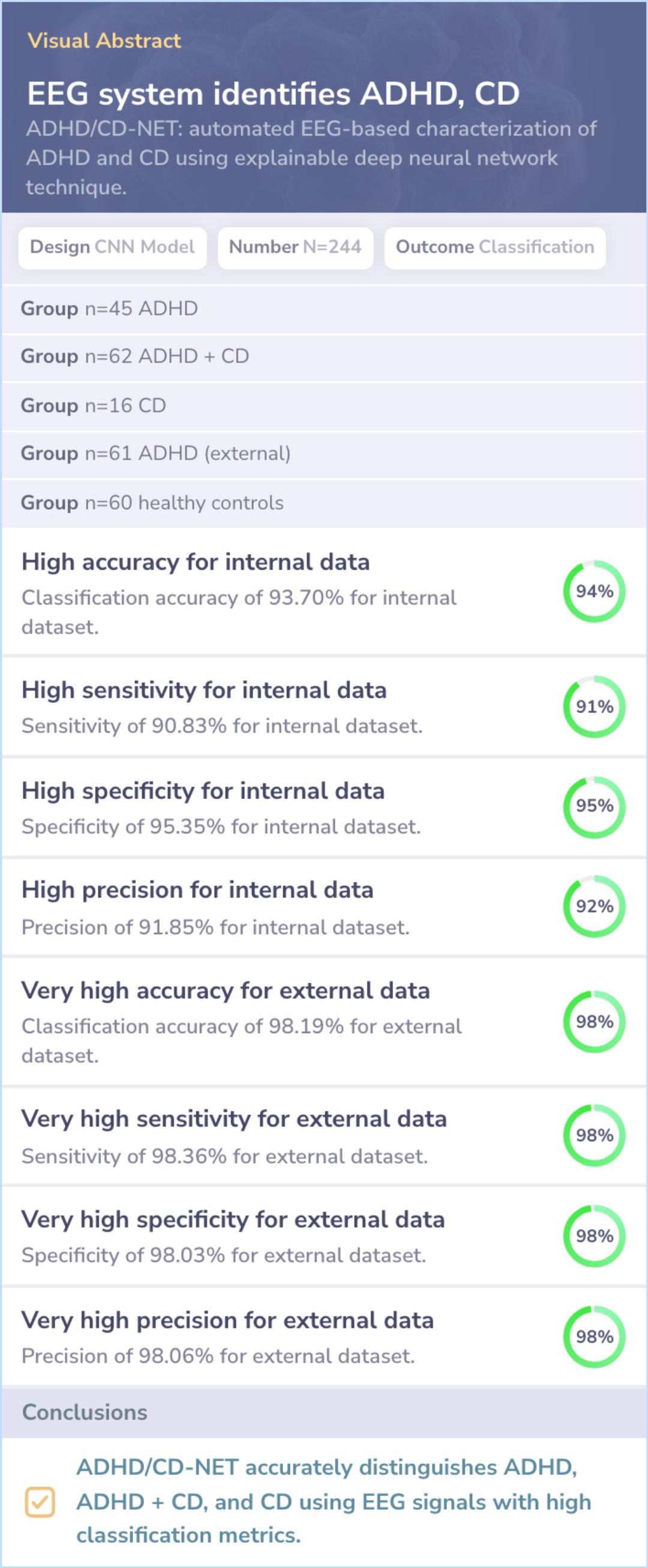Trending ADHD Papers
Visual Abstract
Diagnose ADHD disorder in children using convolutional neural network based on continuous mental task EEG
Diagnosing ADHD in Children Using EEG and CNN
December 9, 2024
author
Moghaddari M, Lighvan MZ, Danishvar S
journal
Comput Methods Programs Biomed
Date Published
undefined undefined undefined
Why link to a visual abstract?
What is a visual abstract?
Original
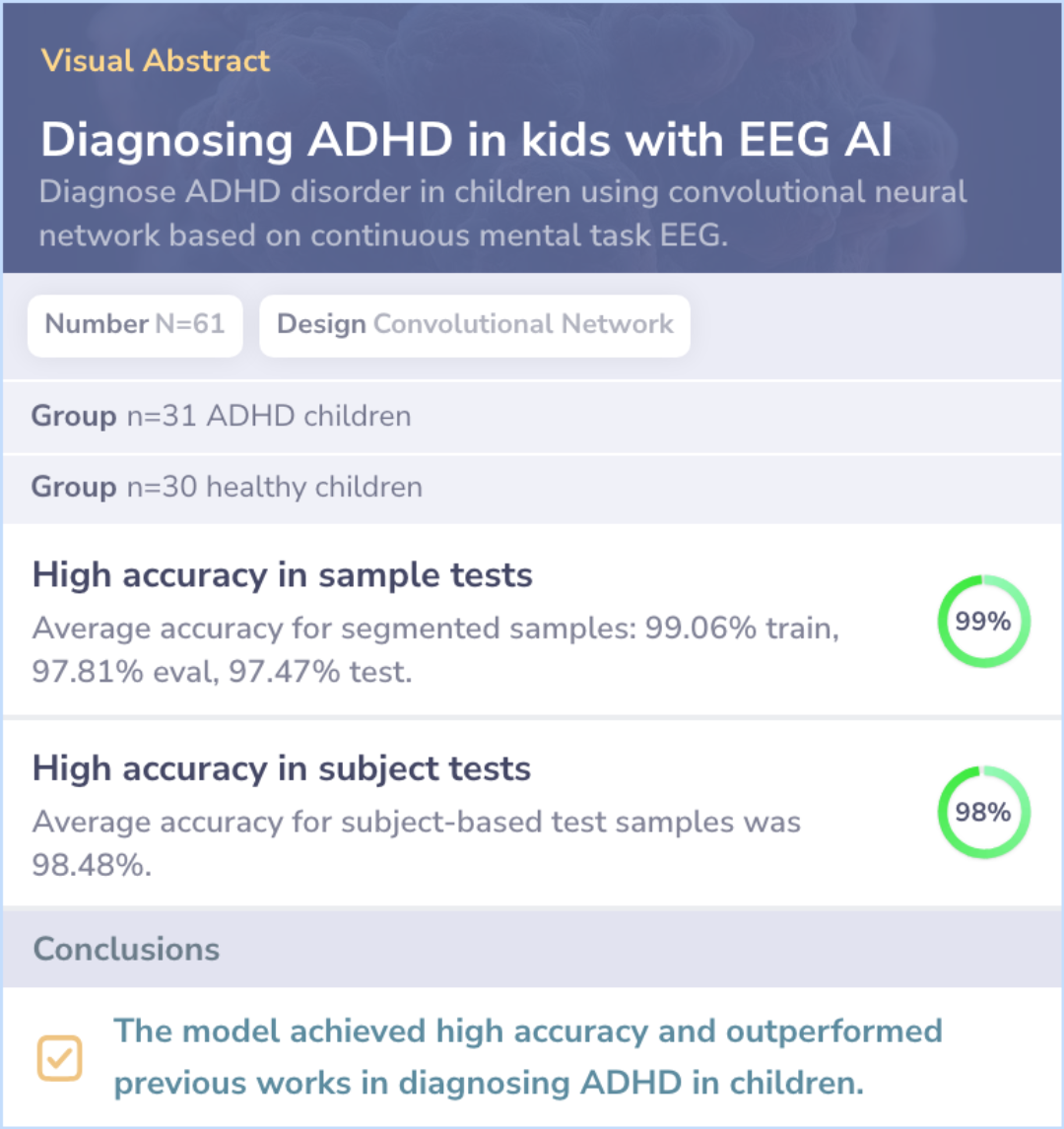
Study Summary
🔬
What They Studied
The main research question was to develop a tool using EEG and deep learning to distinguish ADHD children from healthy ones.
💡
What They Found
The study found that their model accurately diagnosed ADHD in children with higher accuracy and reliability than previous methods.
📚
What This Means
This finding suggests that EEG and deep learning could offer a more effective way for early ADHD diagnosis, adding a new technical approach compared to medication-focused methods like those in the abstracts about Methylphenidate and Adderall.
Study Overview
Background & Objectives
ADHD, a common behavioral issue in children, makes concentration and controlling actions challenging. Treatment often involves medications like methylphenidate, but early diagnosis is key and remains difficult.
The study designed a tool using EEG brain activity tests to help doctors tell ADHD-affected kids apart from healthy ones, advancing early diagnosis efforts where no expert method exists.
The study designed a tool using EEG brain activity tests to help doctors tell ADHD-affected kids apart from healthy ones, advancing early diagnosis efforts where no expert method exists.
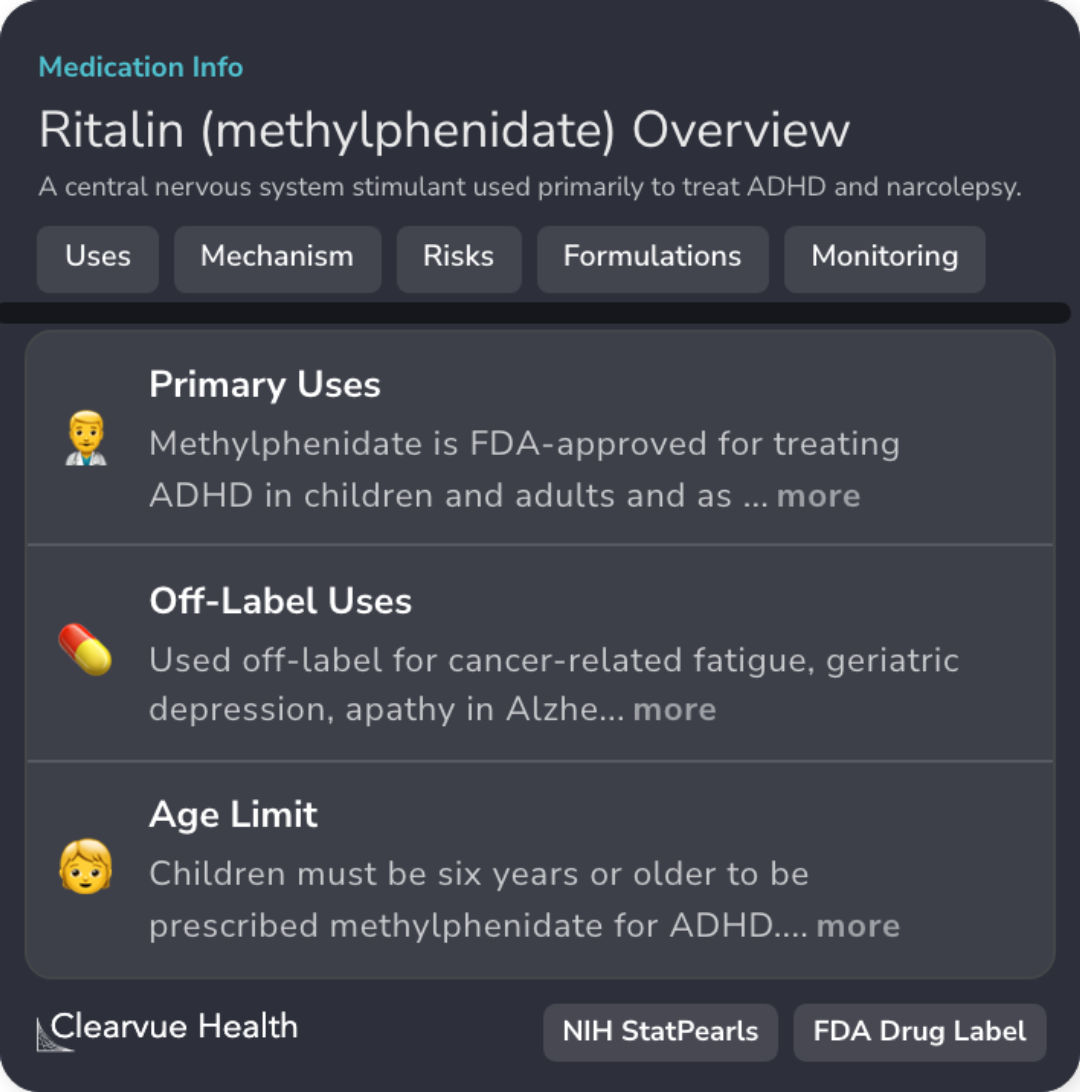
Abstract: background
Attention-Deficit/Hyperactivity Disorder (ADHD) is a chronic behavioral disorder in children. Children with ADHD face many difficulties...more
Study Summary
Methods
This study utilized EEG readings from 31 children diagnosed with ADHD and compared them with 30 without. Using advanced technology in the form of a deep learning model, similar to those used in image processing, the data underwent noise reduction.
Signals were broken into smaller parts, isolating specific brainwaves: theta, alpha, beta, and gamma. These elements were visualized into color images and processed by a 13-layer model. Through this method, the device sought to effectively identify ADHD characteristics.
Signals were broken into smaller parts, isolating specific brainwaves: theta, alpha, beta, and gamma. These elements were visualized into color images and processed by a 13-layer model. Through this method, the device sought to effectively identify ADHD characteristics.
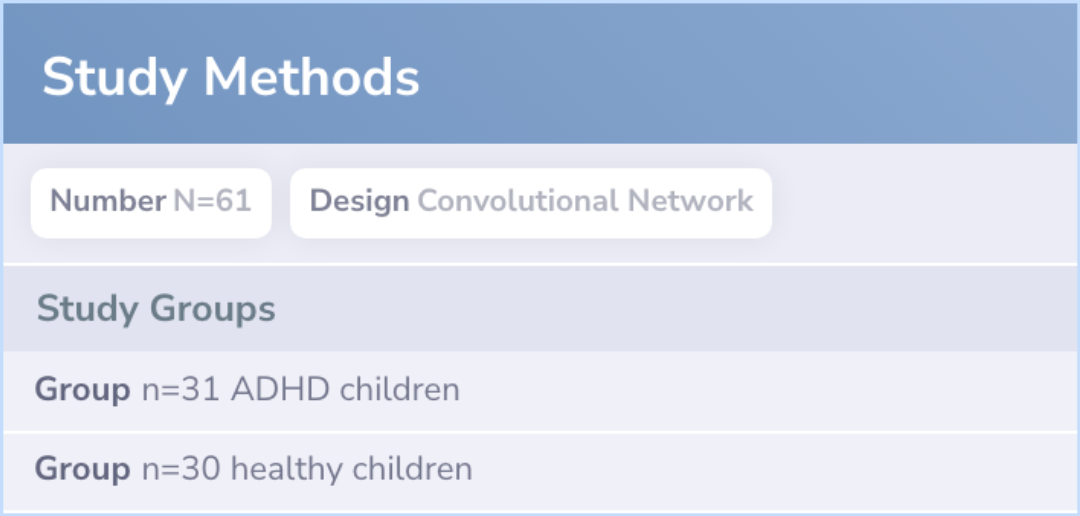
Abstract: methods
We used EEG signals recorded from 31 ADHD children and 30 healthy children. In this study, we developed a deep learning model using a c...more
Study Results
Results
When tested, the model averaged a remarkable 99% accuracy in distinguishing ADHD from non-ADHD conditions. Even when applied to different groups not directly involved in learning, it maintained high accuracy at about 98%.
Further analysis using various metrics, such as precision and recall, showed consistently strong performance, validating the model’s capability. It indicates the potential of this tool in reliably assisting in ADHD diagnosis, outperforming previous methods.
Further analysis using various metrics, such as precision and recall, showed consistently strong performance, validating the model’s capability. It indicates the potential of this tool in reliably assisting in ADHD diagnosis, outperforming previous methods.
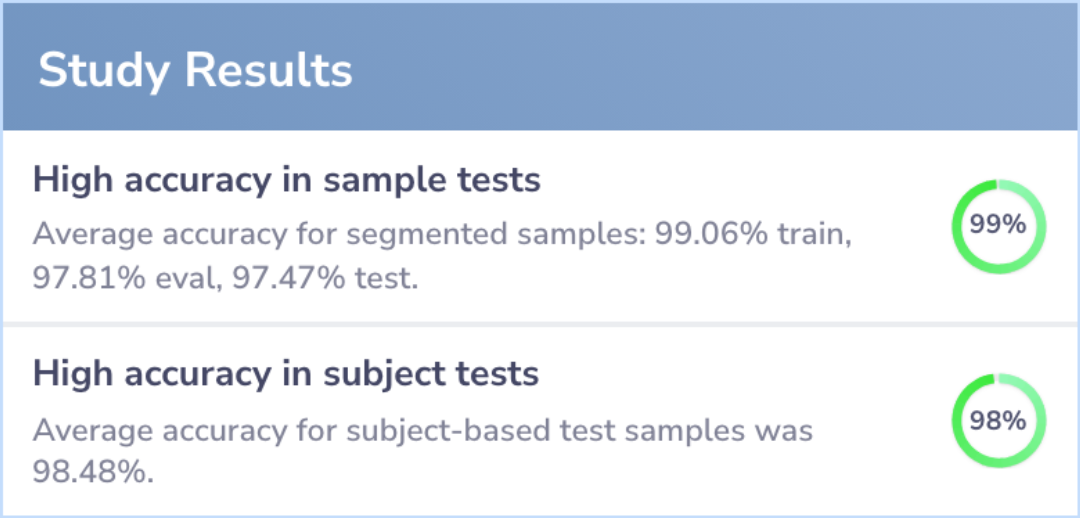
Abstract: results
The proposed model was evaluated by 5-fold cross validation for train, evaluation, and test data and achieved an average accuracy of 99...more
Study Summary
Conclusions
The study's findings reveal that the model outshines previous tools in diagnosing ADHD among children, offering better accuracy and reliability. This technique stands out as a promising aid for doctors, potentially transforming how early ADHD is identified.
Given these positive results, it may soon be an invaluable resource in medical settings, enhancing early detection and allowing for timely intervention in affected children.
Given these positive results, it may soon be an invaluable resource in medical settings, enhancing early detection and allowing for timely intervention in affected children.
Abstract: conclusions
The accuracy, precision, recall, and f1-score of our model were better than all previous works for diagnosing ADHD in children. Based on these prominent and reliable results, this technique can be used as an assistive tool for the physicians in the e...more
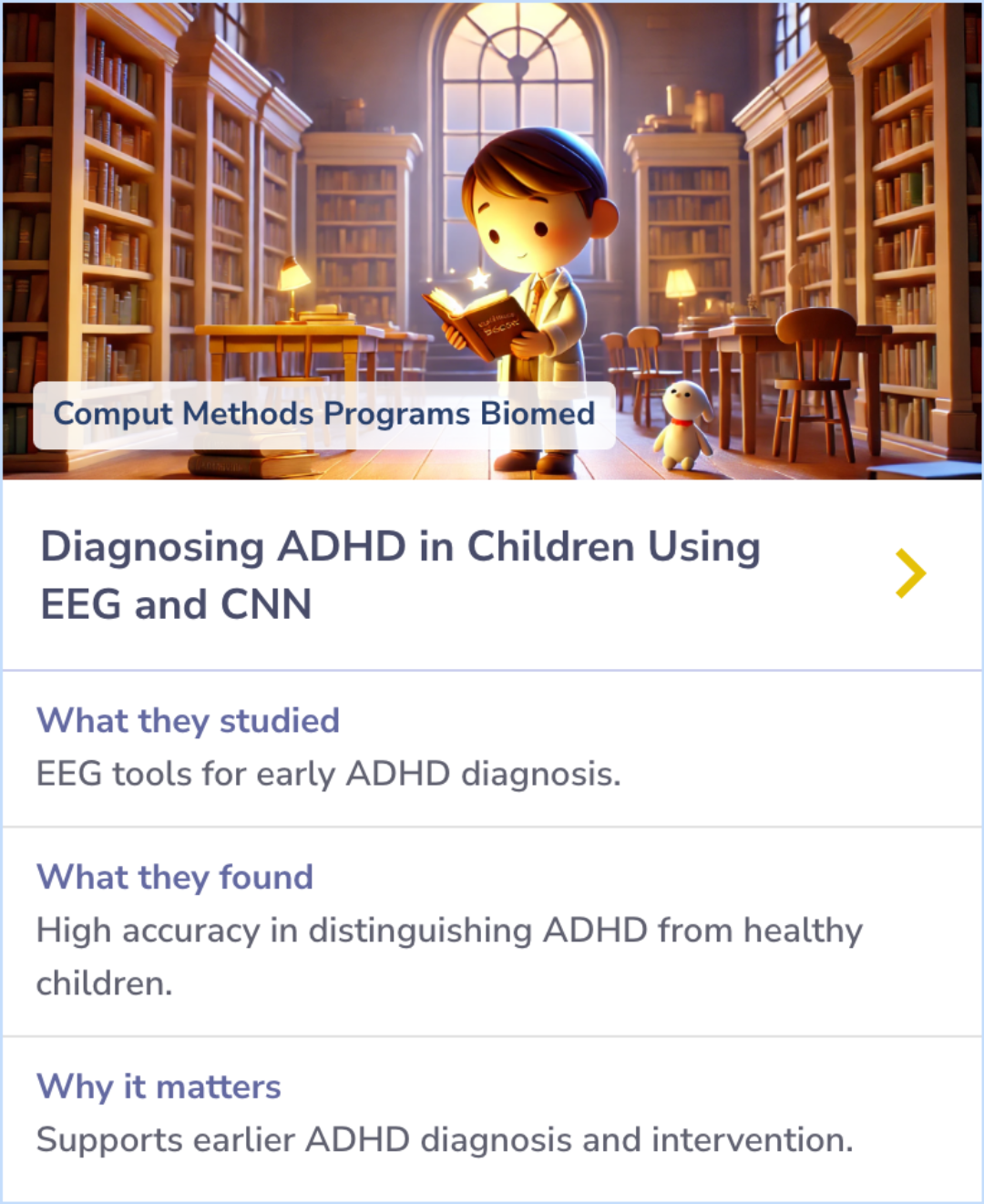
Clinical Guidelines
Guidelines suggest that behavioral therapy is recommended as the first-line treatment for preschool-aged children with ADHD, while stimulant medications are common in school-aged children and adolescents. EEG could serve as an adjunct in assessing ADHD symptoms, though its diagnostic role isn't fully clear.
Regular monitoring and follow-up assessments for ADHD symptoms ensure effective treatment and management adjustment. Parental involvement supports managing ADHD symptoms, especially through behavioral interventions.
Regular monitoring and follow-up assessments for ADHD symptoms ensure effective treatment and management adjustment. Parental involvement supports managing ADHD symptoms, especially through behavioral interventions.
Literature Review
Sharma
Core Insight:Both papers explore using EEG to identify brain disorders in children, with one focusing on ADHD and the other on neurodevelopmental disorders. They both emphasize the importance of EEG patterns but differ in their methodological approaches.
What It Adds:
Multimodal Approach: The comparison paper uses both EEG and speech for classification of disorders.
Task Variety: Includes vocal tasks in different categories to assess brain responses in children.
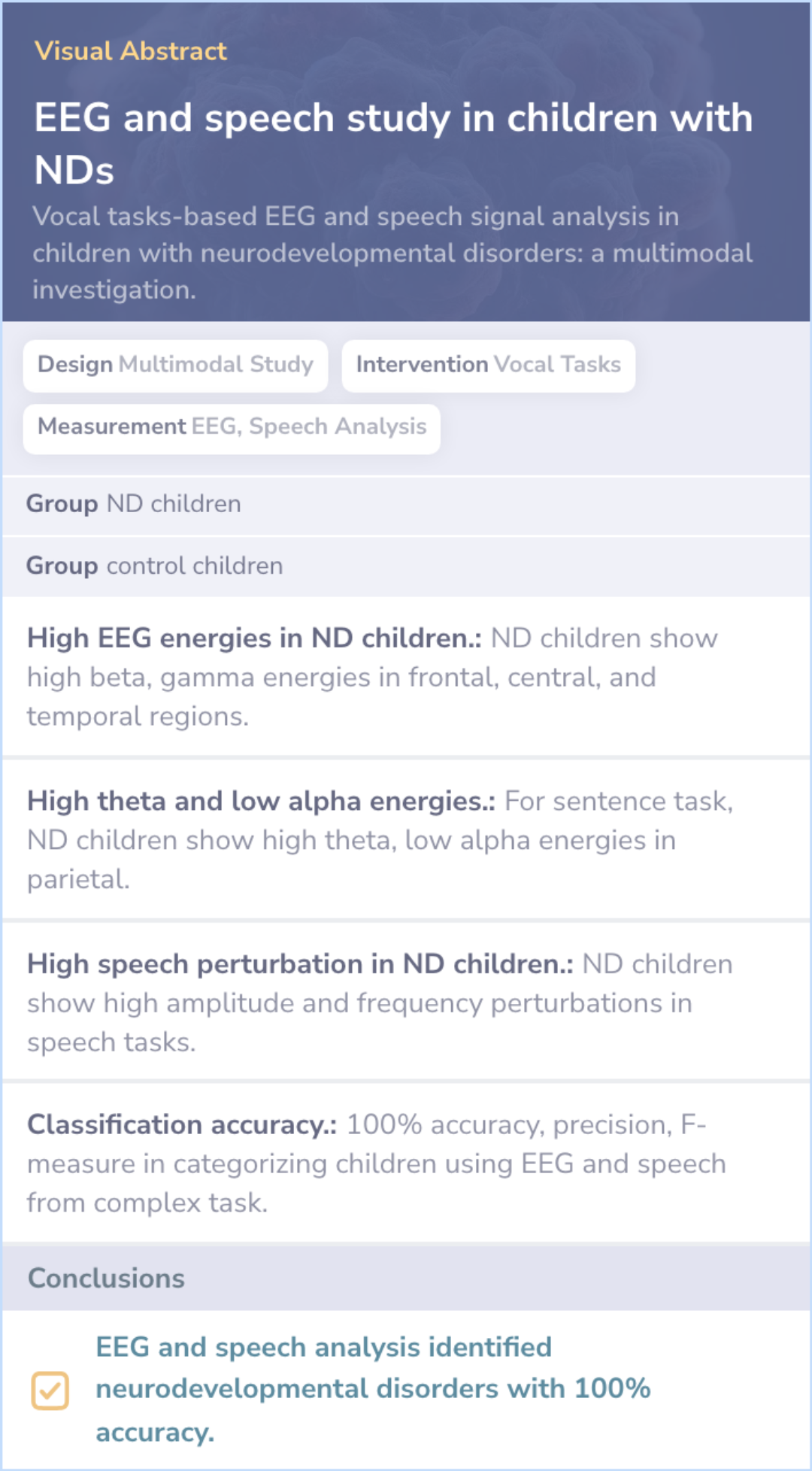
Literature Review
Chen, 2024
Core Insight:This paper expands understanding by highlighting the effectiveness of a combined multi-method model, emphasizing multiple types of data in diagnosing ADHD, while the main paper uses EEG data only.
What It Adds:
Multi-source approach: This study uses different data types beyond EEG to identify ADHD.
Integration: Shows model benefits by merging multiple diagnostic tools.
Shared Themes:Both papers address early ADHD detection challenges, using deep learning models and EEG data.
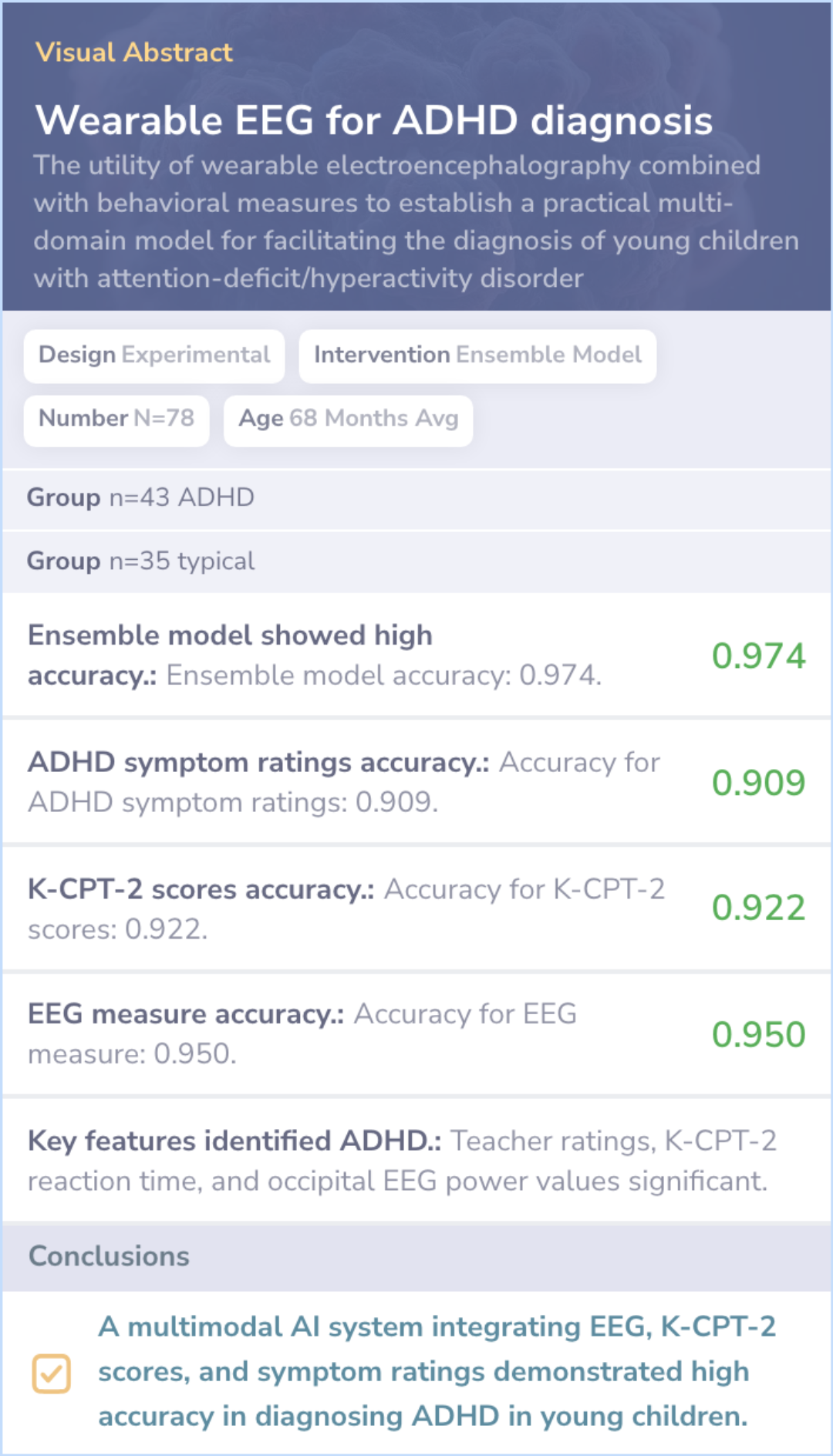
Literature Review
Loh, year
Core Insight:Both papers aim to improve the diagnosis of ADHD using EEG and deep learning, but focus on different aspects of the disorder.
What It Adds:
Diagnosis Complexity: This paper includes conduct disorder differentiation, highlighting complexity.
Performance Evaluation: This paper uses additional metrics like sensitivity and specificity.
